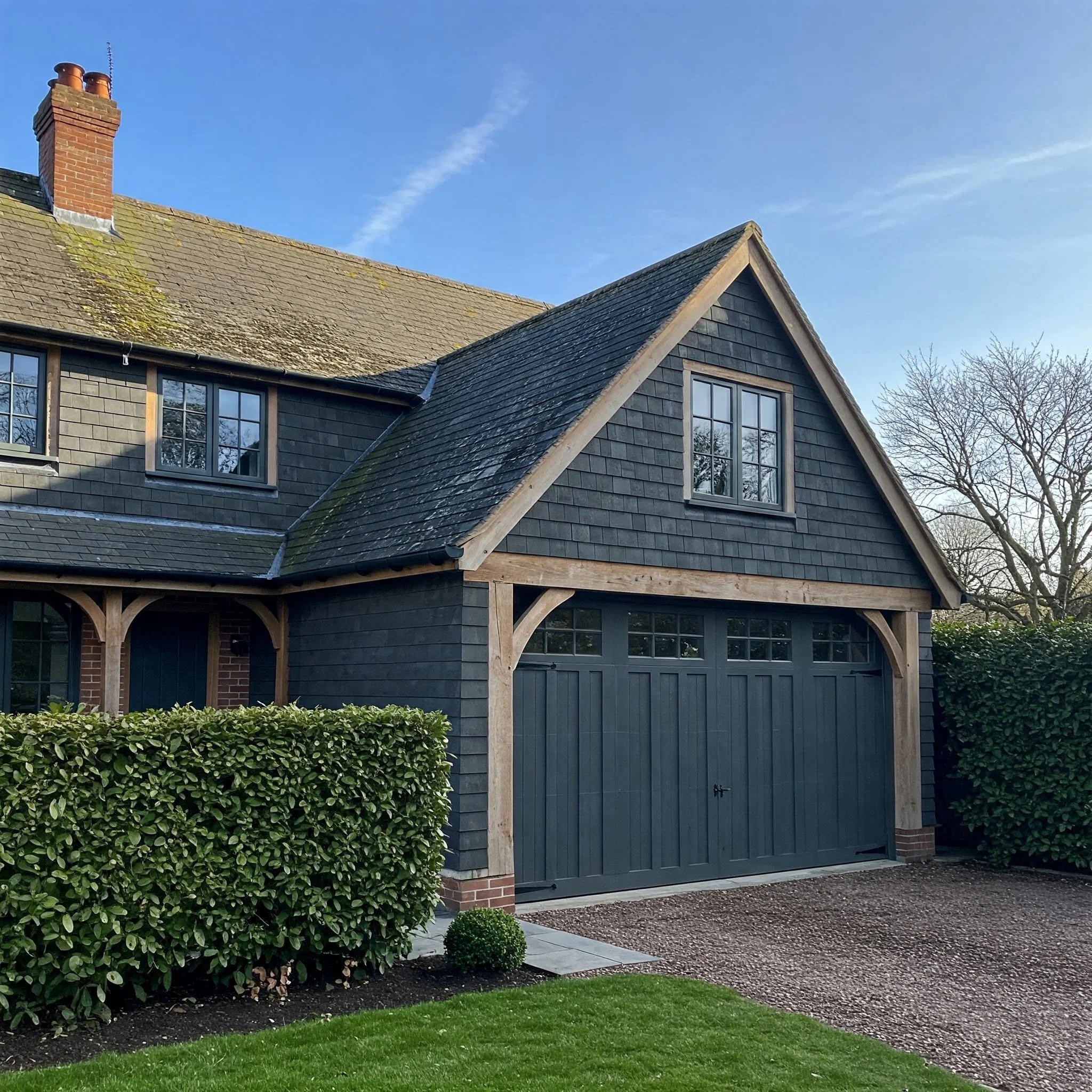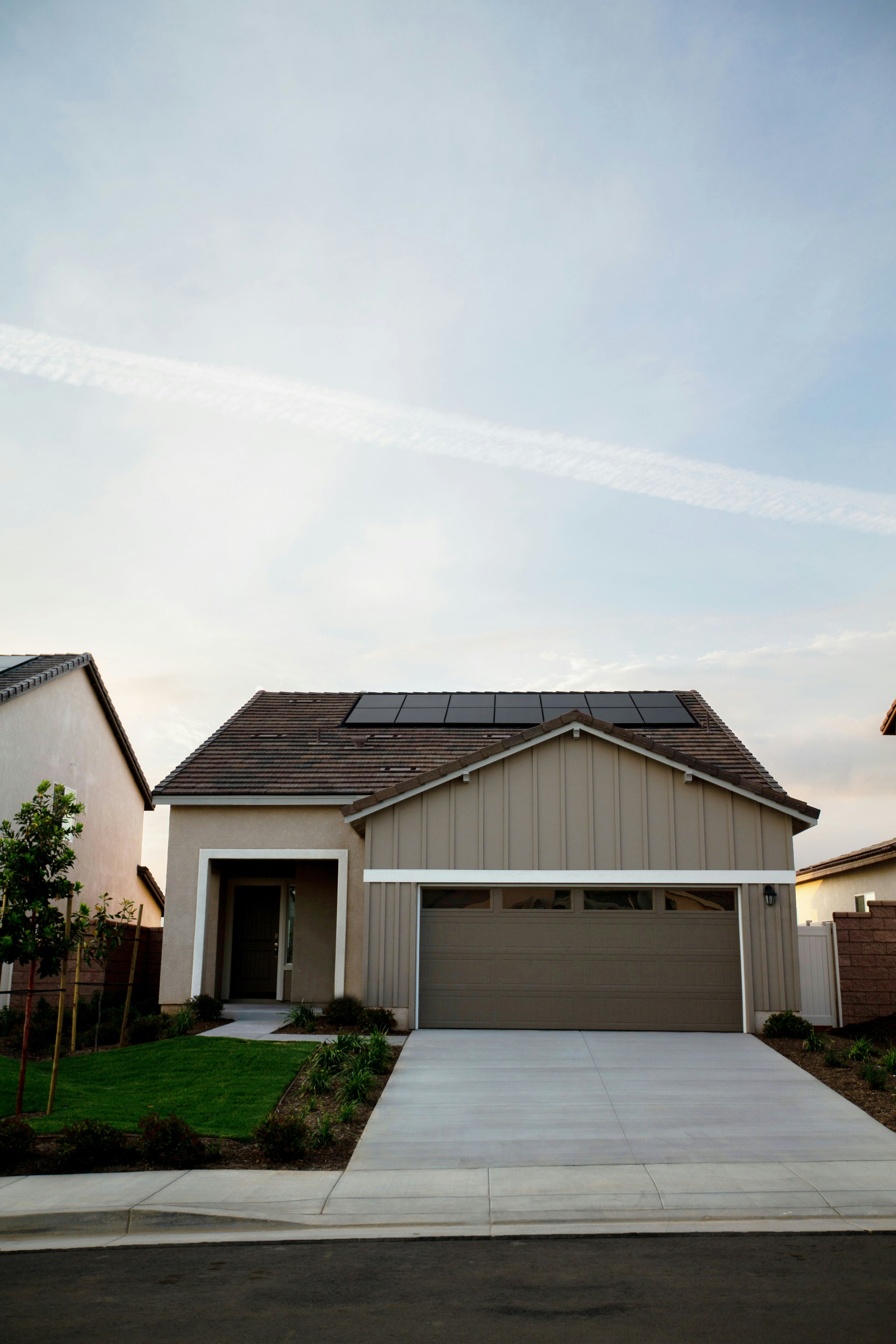How to Align Garage Door Sensors: A Step-by-Step Guide
Struggling with misaligned garage door sensors? Learn how to align garage door sensors with our simple, step-by-step guide and get your garage door working smoothly again!
A garage door that won’t close properly can be more than just a minor inconvenience—it can leave your home vulnerable and disrupt your daily routine. Nine times out of ten, the culprit is often a pair of misaligned garage door sensors. These tiny devices work like magic behind the scenes, ensuring your garage door doesn’t close on something—or someone—it shouldn't. But when they're out of alignment, things can go haywire. Don't worry, though! In this article, we'll walk you through How to Align Garage Door Sensors: A Step-by-Step Guide, so you can get that door closing smoothly again without breaking a sweat.
How to Align Garage Door Sensors: The Basics
What Are Garage Door Sensors?
Before we get into the nitty-gritty, let’s understand what these sensors actually do.
Garage door sensors, also known as photoelectric eyes, are safety devices located near the bottom of the garage door tracks. They work by emitting an invisible beam from one sensor to the other. When the beam is broken—say, by an object, a pet, or even your foot—the garage door won’t close. Misalignment means the sensors can't communicate properly, causing the door to refuse to close or stop halfway down.
Signs That Your Sensors Are Out of Alignment
How can you tell if your garage door sensors need some adjusting? Keep an eye out for these telltale signs:
The garage door won’t close all the way.
The door reverses as soon as it starts closing.
The garage door opener’s lights flash when you try to close it.
One or both sensor lights are blinking or not illuminated at all.
If your garage door isn’t closing properly or seems to be reversing unexpectedly, the issue may lie with the safety sensors. Common signs of misaligned sensors include the door not closing all the way, reversing immediately after starting to close, or the garage door opener's lights flashing. You might also notice that one or both sensor lights are blinking or not illuminated at all. These sensors are designed to prevent accidents by detecting obstructions in the door’s path, so when they become misaligned, your garage door won’t function correctly. Fortunately, fixing this problem is often a straightforward task. With a little adjustment, you can realign the sensors and get your garage door back to working smoothly and safely. Here’s how to troubleshoot and correct sensor issues effectively!
How to Align Garage Door Sensors: A Step-by-Step Guide
Now that you know what you’re dealing with, let’s get down to business. Here's How to Align Garage Door Sensors: A Step-by-Step Guide to help you get your garage door back in action.
Step 1: Gather Your Tools
You don’t need much to realign your garage door sensors, but it’s always best to have a few things handy before you start:
A screwdriver
A level (preferably a carpenter’s level)
Zip ties (optional, but helpful for securing wires)
A measuring tape (optional, if you want to double-check sensor height)
To fix misaligned garage door sensors, you’ll need a few basic tools to get the job done efficiently. A screwdriver is essential for loosening and adjusting the sensor brackets, while a level—preferably a carpenter’s level—ensures the sensors are perfectly aligned. Zip ties can be optional but are incredibly helpful for securing loose wires and keeping them out of the way once the sensors are adjusted. If you want to double-check the height of your sensors, a measuring tape can be useful for precision. With these tools in hand, you’re ready to tackle the alignment issue and restore your garage door to full working order, ensuring it closes smoothly and safely every time.
Step 2: Cut the Power
Safety first, right? Before you do anything, unplug your garage door opener from the power outlet. This will ensure that the door doesn’t accidentally move while you’re working on the sensors. If your opener is hardwired, just flip the breaker that controls the garage door.
Step 3: Inspect the Sensors
Now, take a close look at both of your sensors, which are typically mounted near the bottom of the garage door tracks, about 4-6 inches off the ground. There should be two sensors: one that sends the signal (the transmitter) and one that receives it (the receiver).
Check for Obstructions: Make sure nothing is blocking the sensors—dirt, cobwebs, or debris can interrupt the signal.
Inspect the Wires: Look for any signs of wear or damage in the wires connected to the sensors. If something looks frayed, you may need to replace the wire.
Start by checking for obstructions around the sensors—dirt, cobwebs, or debris can easily interrupt the signal and prevent the door from closing properly. A quick clean-up might solve the issue without any further adjustments. Next, inspect the wires connected to the sensors. Over time, these wires can become worn or damaged, which could affect the sensor's functionality. If you notice any fraying or damage, replacing the wire might be necessary. Taking these steps can help you determine whether a simple fix is needed or if further troubleshooting is required to get your garage door sensors back in alignment.
Step 4: Loosen the Sensor Brackets
When it comes to adjusting your garage door sensors, a small tweak can often solve the problem. Start by using your screwdriver to slightly loosen the brackets that secure the sensors in place. There’s no need to remove the brackets completely—just loosen them enough so the sensors can move freely up, down, or side to side. This gives you the flexibility to adjust their positioning for proper alignment. Misaligned sensors are a common cause of garage doors refusing to close, and with this simple adjustment, you can fine-tune their angle to ensure they are facing each other correctly. Once aligned, tighten the screws back into place and test your garage door to see if it now operates smoothly.
Step 5: Align the Sensors
Here’s where the magic happens! You need to make sure the sensors are directly facing each other.
Use a Level: Place your level across both sensors to ensure they are perfectly aligned horizontally. If you don’t have a level, you can use a string tied between the two sensor brackets as a guide.
Adjust the Sensors: Move the sensors up, down, or side to side until they are both pointing directly at each other. The lights on the sensors will indicate whether they’re aligned correctly. When the sensors are in perfect alignment, both lights should be solid (not blinking).
Once the sensor brackets are loosened, it’s time to ensure your garage door sensors are perfectly aligned. Using a level, place it across both sensors to check if they are horizontally in line. If you don’t have a level, you can improvise by tying a string between the two sensor brackets to act as a guide. After ensuring they are level, begin adjusting the sensors by gently moving them up, down, or side to side until they point directly at each other. Keep an eye on the sensor lights—both should remain solid when they are properly aligned. Blinking lights indicate misalignment, so make fine adjustments as needed. With both lights solid, your sensors are correctly aligned and ready for action.
Step 6: Tighten the Brackets
After ensuring your garage door sensors are properly aligned, the next step is to secure them in place. Using your screwdriver, carefully tighten the brackets while being mindful not to shift the sensors from their aligned position. It’s crucial to tighten the screws firmly without causing the sensors to move, as even a slight misalignment can prevent your garage door from functioning correctly. Once the brackets are securely fastened, double-check the sensor lights—both should remain solid, confirming they’re still aligned. Tightening the brackets properly locks the sensors in place, ensuring that they stay aligned over time and your garage door operates smoothly without further issues. Now, your garage door should close as intended without any interruptions from misaligned sensors.
Step 7: Secure Loose Wires
If the wires leading to your sensors are dangling or getting in the way, use zip ties to secure them neatly to the wall or the garage door track. This will help keep them from getting damaged or interfering with the sensors’ alignment in the future.
Step 8: Test the Sensors
With everything in place, it’s time to test the sensors. Plug your garage door opener back in (or flip the breaker) and try closing the garage door.
Does it Close Properly? If the door closes without reversing or stopping midway, congratulations—you’ve successfully aligned your garage door sensors!
If It Still Won’t Close: Double-check your alignment and ensure both sensor lights are solid. If one or both lights are still blinking, you may need to readjust the sensors.
Now that your sensors are secured, it's time to test the garage door. Try closing the door to see if it operates smoothly without reversing or stopping midway. If it closes properly, congratulations—you’ve successfully aligned your garage door sensors! However, if the door still won’t close or the sensors continue to trigger a reverse, don’t worry. Double-check the alignment by ensuring both sensor lights are solid. If one or both lights are blinking, this indicates the sensors are still misaligned. You may need to make small adjustments, moving the sensors slightly up, down, or side to side until both lights remain steady. With a bit of patience, you’ll have your garage door functioning perfectly in no time.
Conclusion
And there you have it—a straightforward guide on How to Align Garage Door Sensors: A Step-by-Step Guide. Misaligned sensors can be a headache, but with a few tools and a bit of patience, you can get them back in working order and have your garage door closing smoothly in no time. Remember, those sensors play a vital role in keeping your home safe, so it's worth making sure they're working properly. If you follow the steps outlined here and still have issues, don’t hesitate to reach out to a professional for help. Happy fixing!
Frequently Asked Questions
1. Why are my garage door sensor lights blinking?
Blinking sensor lights typically indicate that the sensors are misaligned or that something is obstructing the beam. Recheck the alignment and make sure there’s nothing blocking the signal.
2. Do garage door sensors need to be replaced often?
Not really. Garage door sensors are designed to last a long time. However, if the sensors are damaged or the wires are frayed, it might be time for a replacement.
3. Can I bypass garage door sensors?
While it’s technically possible to bypass garage door sensors, it’s not recommended for safety reasons. These sensors are there to prevent accidents, so bypassing them could put you or your family at risk.
4. What if my garage door sensors are aligned but the door still won’t close?
If your sensors are aligned but the door won’t close, there could be another issue at play, like a problem with the garage door opener or the door’s track alignment. It might be time to call a professional for further inspection.
5. How often should I check my garage door sensors?
It’s a good idea to check your sensors every few months, especially if your garage door is used frequently. Regular maintenance can prevent small alignment issues from becoming bigger problems.















